Whether you are new to the world of Curly Horses or an old pro, it’s not always as simple as it sounds to identify a curly horse.
The gene responsible for a curly horse’s coat is a gene that is carried receptively in many bloodlines of many breeds. Almost all breeds that have Mustang and/or Spanish genetics may occasionally produce a curly foal when two horses that carry a recessive curly gene mate and each pass the curly coat gene to the offspring.

In generations past, these foals were often put down shortly after birth, as breeders believed the curly coat was evidence of a genetic flaw or birth defects.
Now we know, however, horses with curly coats are not only healthy and normal horses, but are also hypoallergenic- increasing their value and marketability for the many riders and would-be-riders who have horse allergies.
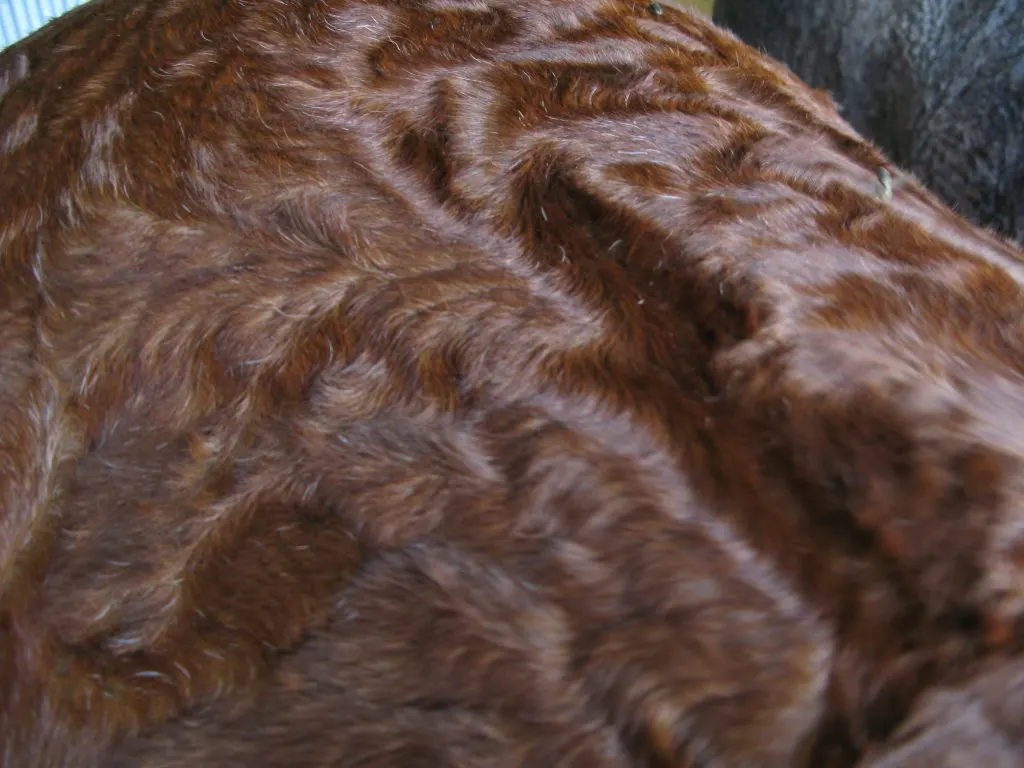
Sometimes it’s not easy to tell the difference between a curly horse and regular horse – the curly gene, like curly hair on humans, can be expressed on a continuum from only slightly visible curls to extremely tightly kinked locks. Adding to the confusion, there is a disease known as Cushing’s disease (a pituitary gland tumor fairly common in horses) that cause a horse’s hair to grow unevenly and not shed at the same rate as of the horses. The appearance of a Cushing’s horse can mimic curly horses to an untrained eye, but in this article, we will discuss how to tell the between a horse with no curly genes, a horse with Cushing’s Disease, and a curly horse.
1. Check the Ears (Winter & Summer)
One of the easiest ways to identify a horse that is expressing genes for curls is to look inside their ears, a quick peek at the hair growing out from inside the ear – especially in wintertime- is one of the best ways to tell the difference between horse with Cushing’s and curly horse. Curly horses generally (but not always) have the curliest hairs inside their ears – if your horse has hair in the ears that is curled more obviously than the rest of the body, it’s a good sign the genetic trait for curls is being expressed in your horse
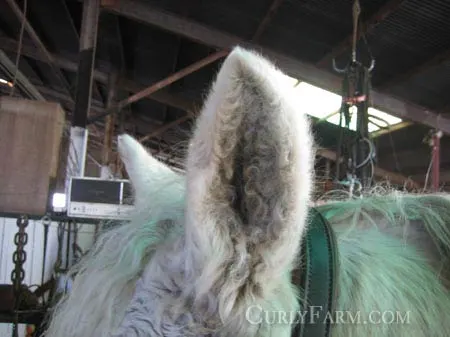
While curls in ears can be a good clue- they are not absolute. The very curly horse below does not exhibit notable curls in the ear.
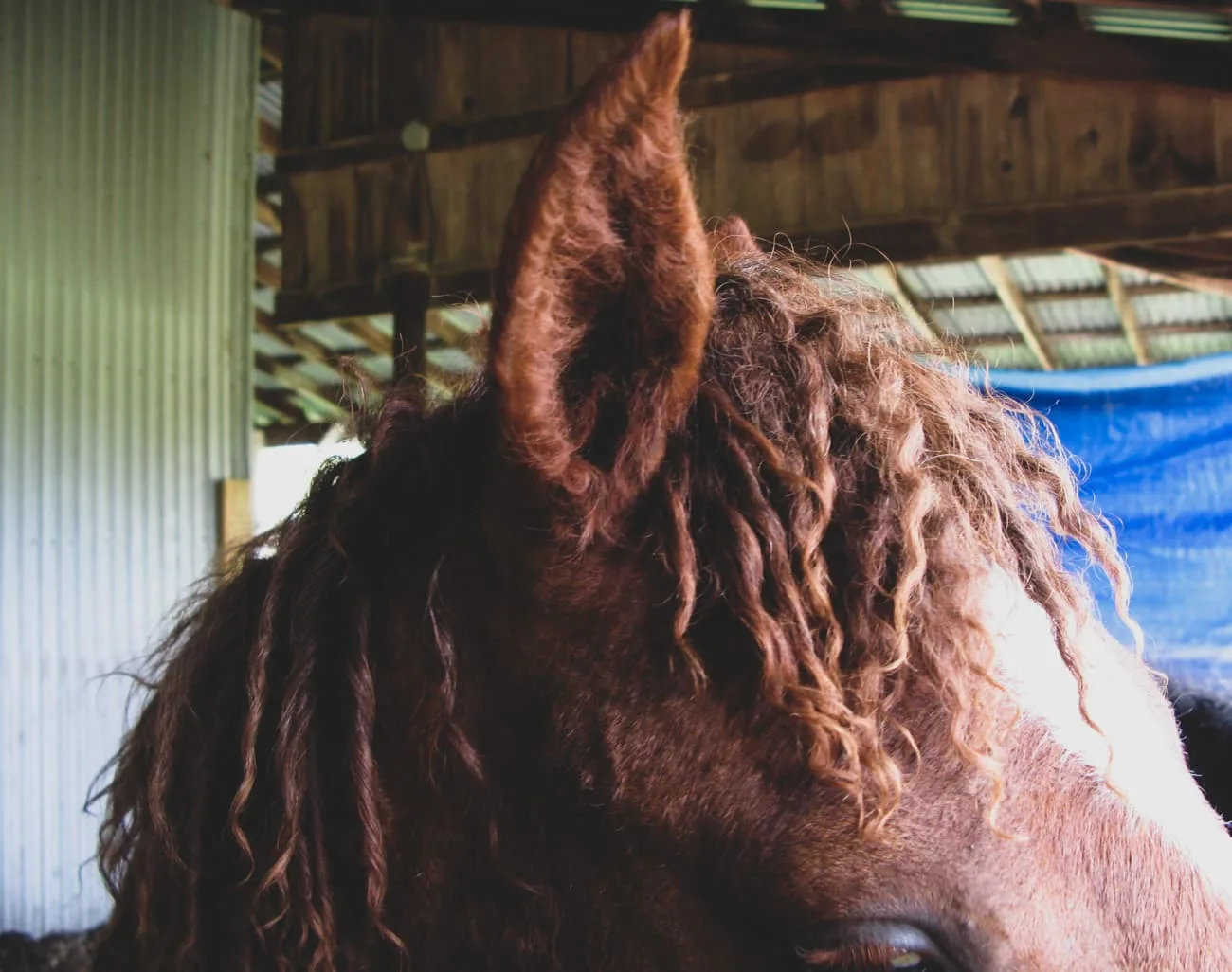
2. Shedding Season
Curly horses will, like all horses, grow a long coat in the winter. For curly horses, this means that curls on the body are much more visible in the winter than they are in the summer (most curly horses will have a smooth looking coat in the summer, although some may have a crushed velvet appearance to the summer coat). A genetically curly horse will shed roughly the same time as other horses kept in the same conditions (shedding rate in the spring can be related to environmental factors). If your horse does not shed at a regular rate, it might be worth consulting your veterinarian, as this is a known symptom of Cushing’s Disease.
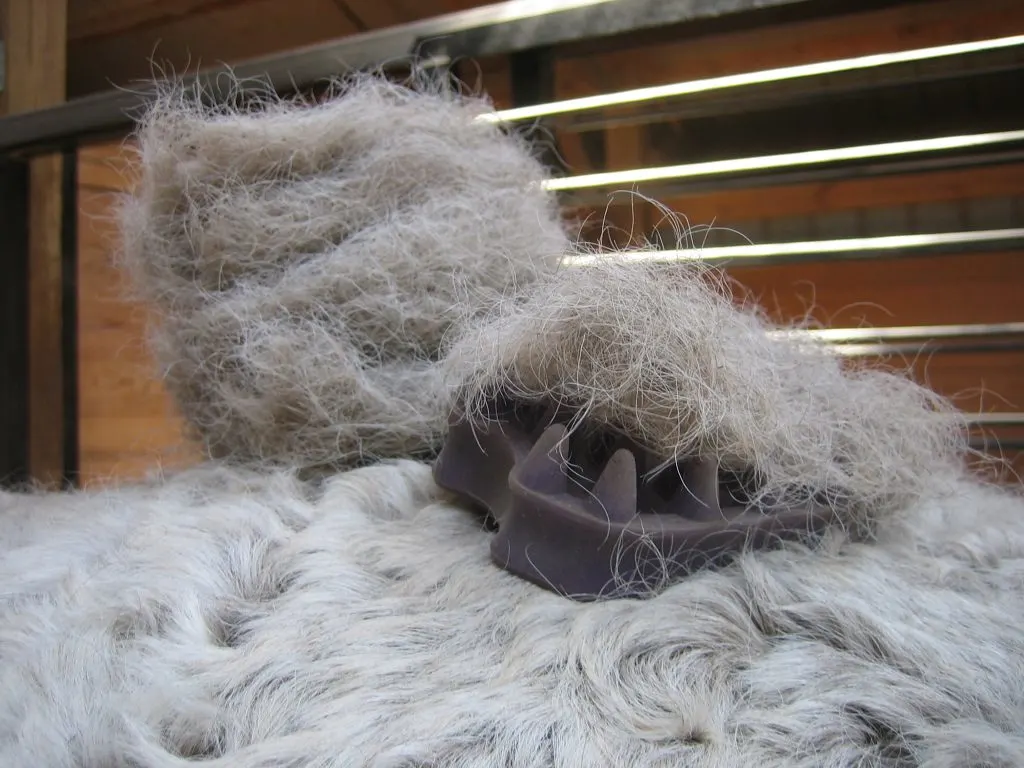
3. Fetlocks (Winter)
Fetlocks Can also be a clue to identifying the curly horse. Check your horses lower leg, is there feathering around the fetlock? (aka “ankle joint”) and are those longer hairs curly or straight? If those hairs exhibit curls that is another sign that your horse might be expressing genetic traits for curls.
In the summertime, most horses – even curlies – will shed longer hairs (called feathering) around the fetlocks, so this may not be a reliable predictor in the summertime.
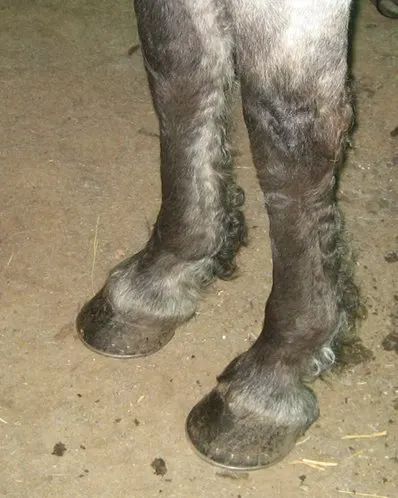
4. Chest
The chest can be another reliable area of the body to check for curls. While in a non-curly horse will exhibit straight-shaft hair in this area, and a horse with Cushing’s disease will show uneven or “bent” looking fur, curlies will exhibit a more notable curl in the chest area than on other areas of their body.
NOTE that Most horses expressing the curly gene will not be as curly as the horse shown below.
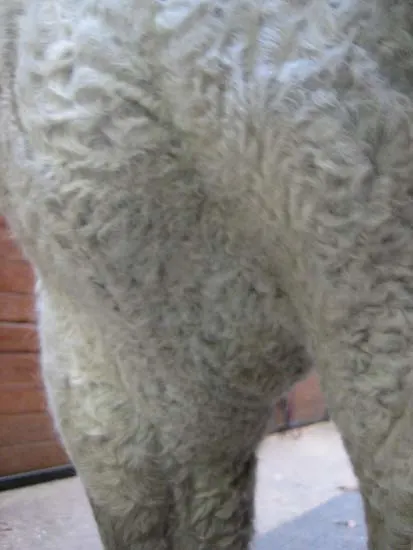
5. Mane
Not all horses with the curly gene will have curls in their mane, but if you DO have a horse showing curls in their main it’s a dead-on clue that the horse carries the gene for curls- and is very likely hypoallergenic.
While the weight of tails tends to straighten tail hairs via the force of gravity, manes are more likely to retain curls. If combed, Curly horses mane will often be “puffy” or frizzy, so generally, manes of Curly horses are allowed to grow naturally, uncombed, and often formed into loose dreadlocks.
Some horses with the curly gene grow thick, long manes, but some share a trait common with Appaloosa’s- difficulty growing manes at all. If your horse has little or no mane at all and is showing other signs of curly gene expression, this can be taken as an indicator of the curly gene present.
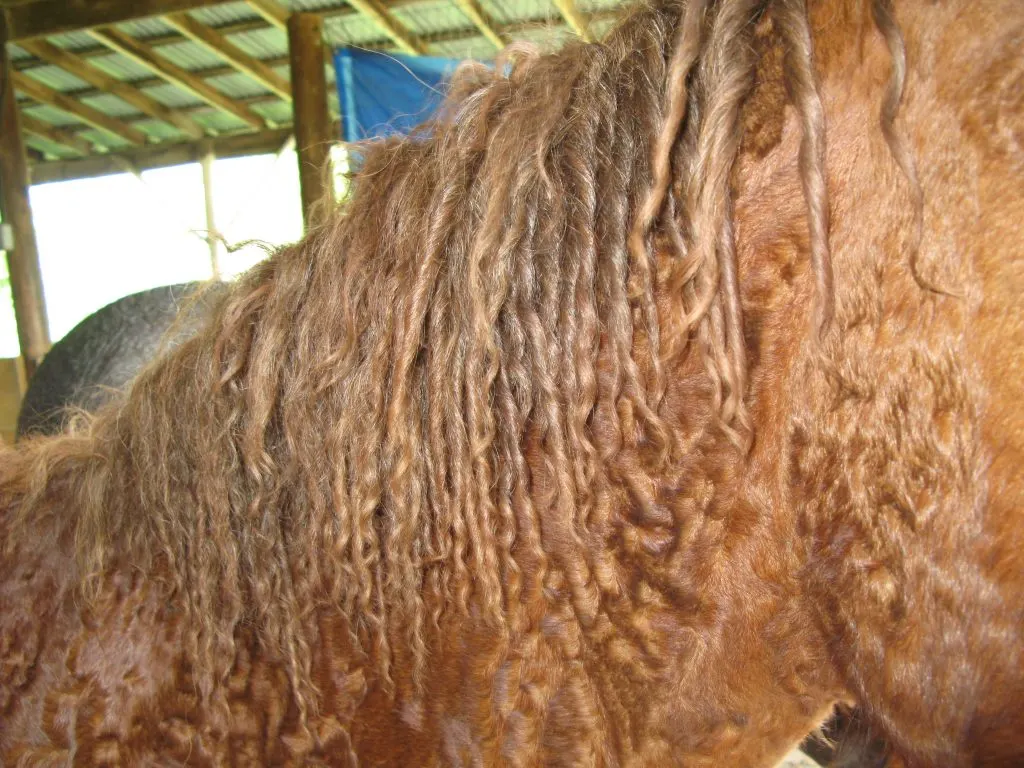
Caring for curly mane can be a challenge- Especially double manes that are split down the middle. We recommend running braids for taming wild manes during riding, and pasture braids for caring for the wildest of locks. You can even mix up your braiding with 4 strand braiding to brush up for head-turning grooming during show season.
6. Vet Check
If you notice some indicators that your horse could be curly but are still confused, it might be helpful to consult with your vet. Although vets are often not familiar with curly horses, they can rule out other causes of the curly traits you think you might be noticing.
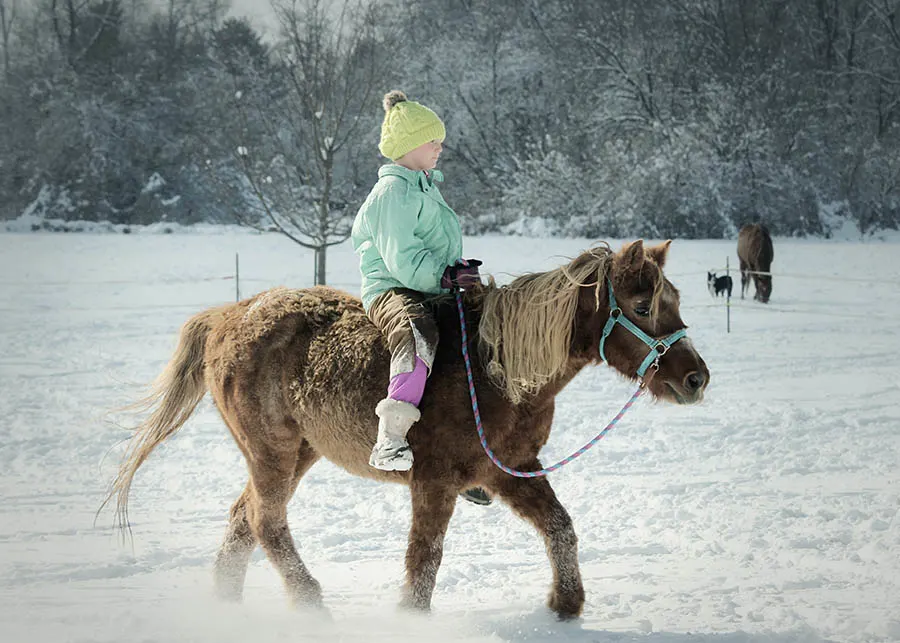
7. Hypoallergenic Test
Anecdotally, all horses who express curly traits are hypoallergenic, and some horses who carry the gene recessively are also hypoallergenic. (This author, who is allergic to horses, has found that all non-curly horses that are curly horses by breeding- ie the offspring of two curly horses- elicit no reaction while half-curly horses that do not express the curly trait may or may not elicit an allergic response). Click here to read more research on allergies to horses and curly Horses.
If you can do it safely, having someone who is horse-allergic handle your horse is actually an accurate indicator of the presence of the curly gene.
In order to actually tell if a curly is hypoallergenic, you’ll need to follow some guidelines while checking:
Minimize cross-contamination: Even if a horse is 100% hypoallergenic, if it lives in a field and is bonded with other horses, it will carry both pollen and non-hypoallergenic horse dander in its coat. To test a horse’s hypoallergenic-ness, you’ll need to first bathe the horse and let it dry in a less-allergen laden environment (tied up outdoors is best)
Be safe: 1. Make sure your allergy tester does not have dangerously-critical allergic responses. The ideal tester is someone who gets the sniffles or itchy skin after handling horses – and is NOT someone who has a history of experiencing anaphylactic shock or has allergy-triggered asthma attacks. 2. Make sure your tester has not taken preventative allergy medication in the previous 24 hours, and that they have appropriate medication with them to medicate any allergic response they do have.
Best Practice:
Phase 1: You don’t need to overexpose your tester. I recommend initially limiting contact: have your tester approach the horse, rub their inner arm on the horses’s fur, and retreat. Wait 10-15 minutes. If a person has no irritation on their arm and no sneezing, more contact can be initiated.
Phase 2: I find the best test to both prove a horse’s hypoallergenic-ness and build confidence for the regular-horse-allergic person is to allow the person to brush and groom the horse. Be SURE that all grooming tools, however, are new or have been cleaned thoroughly so they don’t send non-hypoallergenic horse dander into the air around the allergy tester and confuse the results.
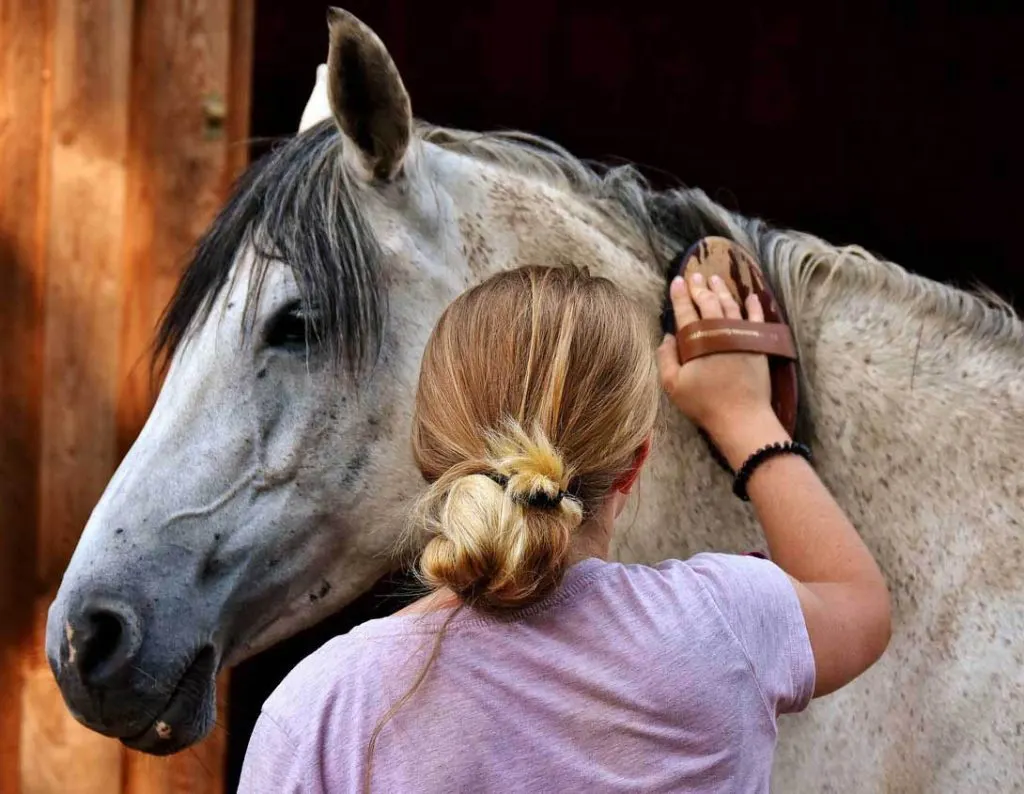
Range of Gene Expression in Curly Horses
Curly horses can be tough to identify because of the wide variety of ways this gene can manifest in horses’ coats. In the second half of this article, we will discuss some of the known “types” of curly horse coats.
Minimal Curly Horses
Minimal trait Curly horses exhibit some, but not all traits of a curly coat. The curls are usually most evident inside the ears year-round, around the fetlocks in winter, and on the underside of the body from the chest to tail. Their coats will exhibit no curls on their body in the summertime. Often even thick winter fur on their body will look just like a straight horse’s coat- may show a slight curl, often appearing like crushed velvet.
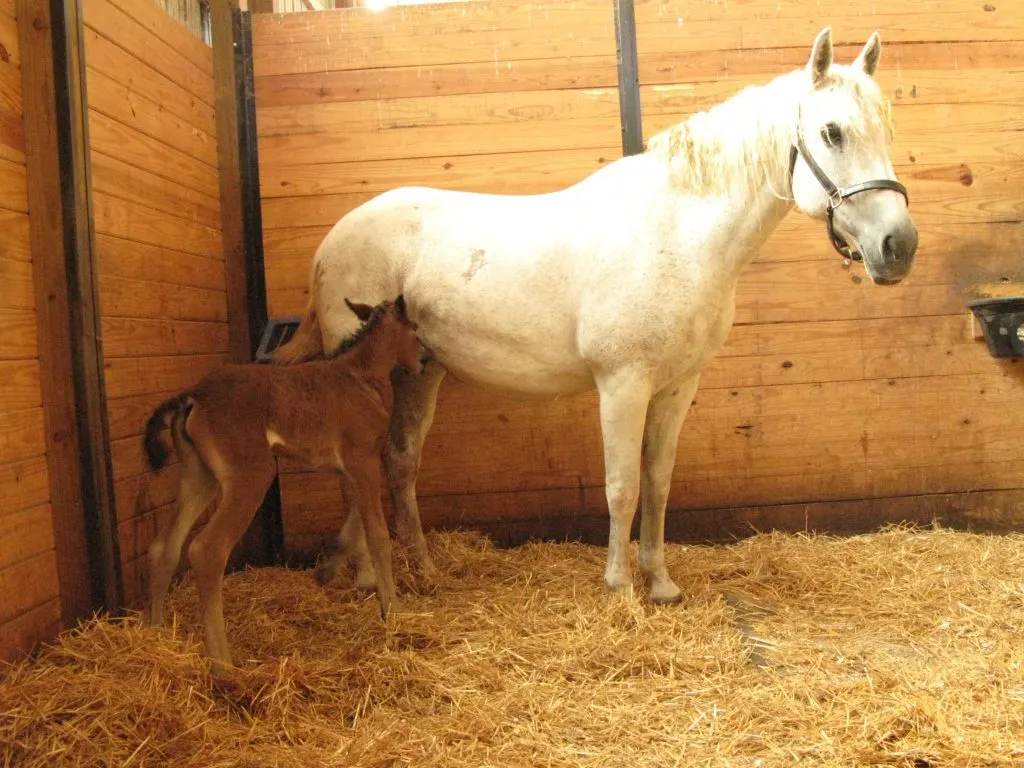
Moderate Curly Horses
“Moderate” Curly horses are what most people who are a bit familiar with Curly horses think of when they think of a “curly horse.” Moderate Curly horses appear very obviously curly from Maine to tail in the winter, and in the summer will still display obviously curly hair on some areas of the body. Generally, their manes and tails have curl and the summer coat may or may not display curls in the form of a “crushed velvet” appearance.
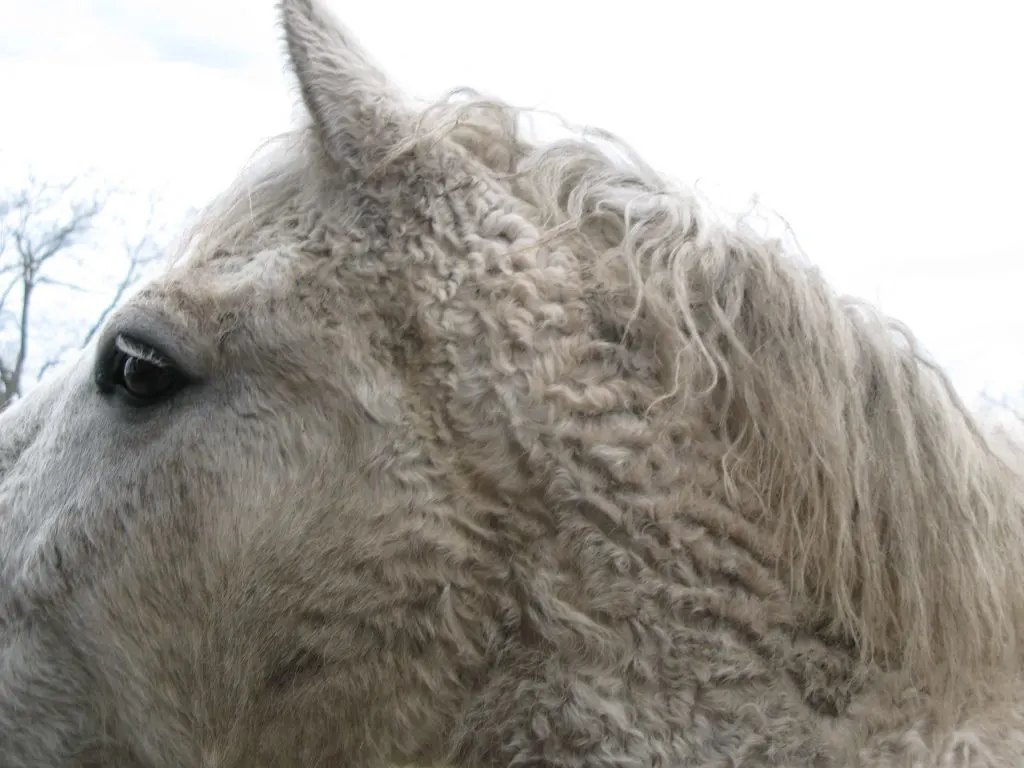

Extreme Curly Horses
Extreme Curly horses exhibit extreme versions of all of the curly horse traits – their winter coats tightly curl (sometimes into ringlets) and manes are tightly curled “poofs” or extreme Curly’s may struggle to grow much mane at all. Year-round, these Curly’s will exhibit obvious curls in their ears, chest and groin, and fetlocks.
Antidotally, extreme Curly’s are the”most hypoallergenic,” as they have coats that are extremely different from typical horsehair.
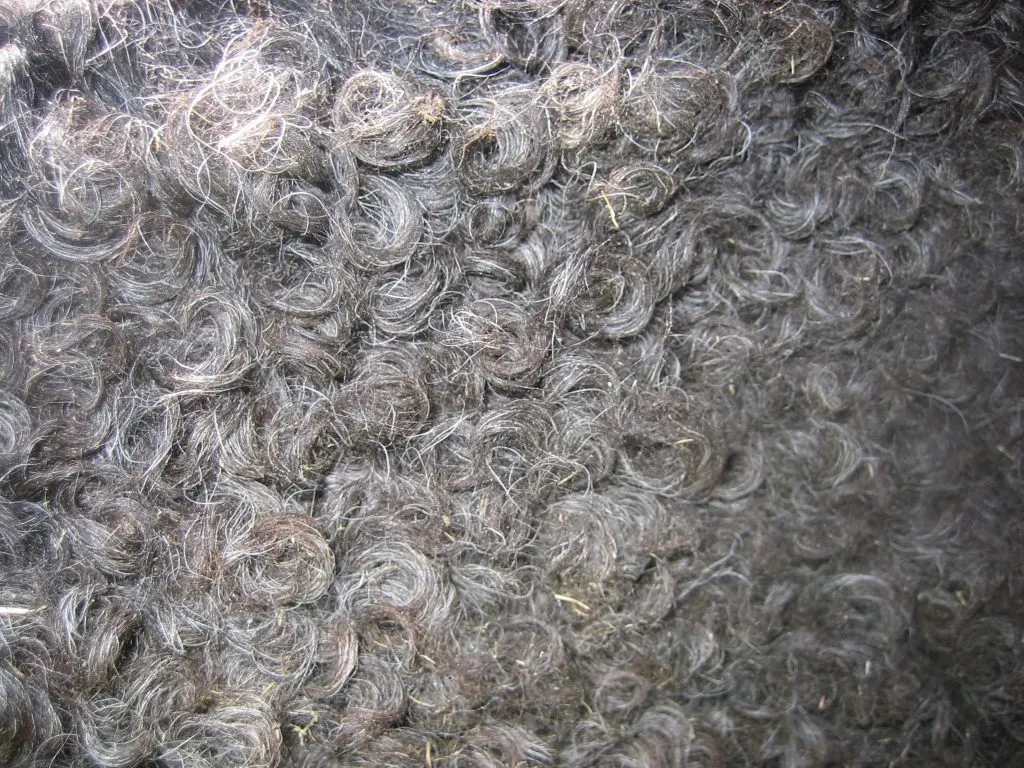
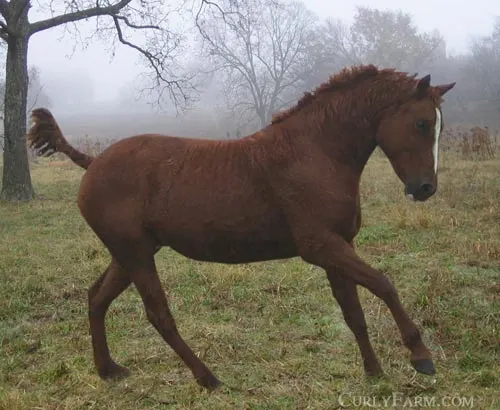
Straight Coat
Many horses with the curly gene aren’t curly! This photo is a headshot of a “straight” curly horse. That is, this horse is hypoallergenic, but does not express the gene for curls. He looks just like an average horse, but his coat is still hypoallergenic to most allergy sufferers.
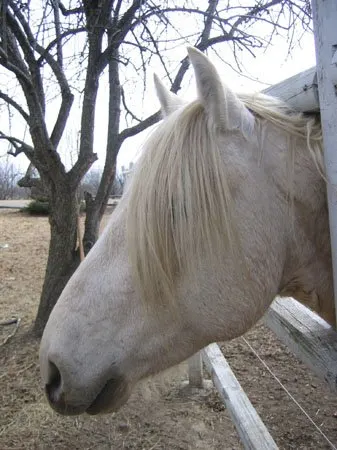
“Bunny Fur”
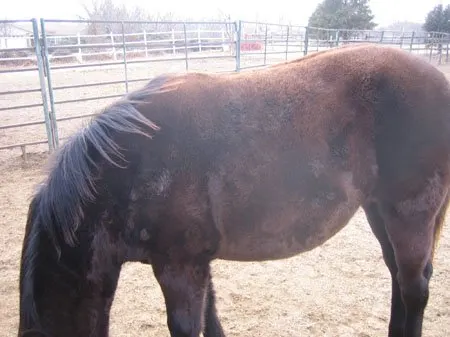
This picture illustrates a rare coat type among Bashkir curlies. This is the “bunny fur” type coat. Instead of arching down like a normal horse, or curling around like a curly horse, this filly’s coat grows curling outwards and resembles fluffy bunny hair. The splotches on her coat are from when she gets a clump of fur wet and it doesn’t fluff out.
